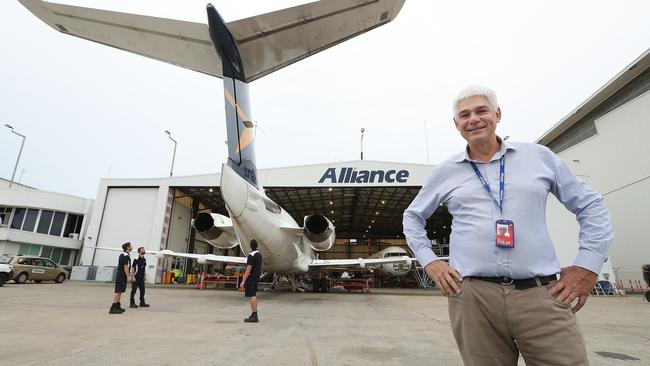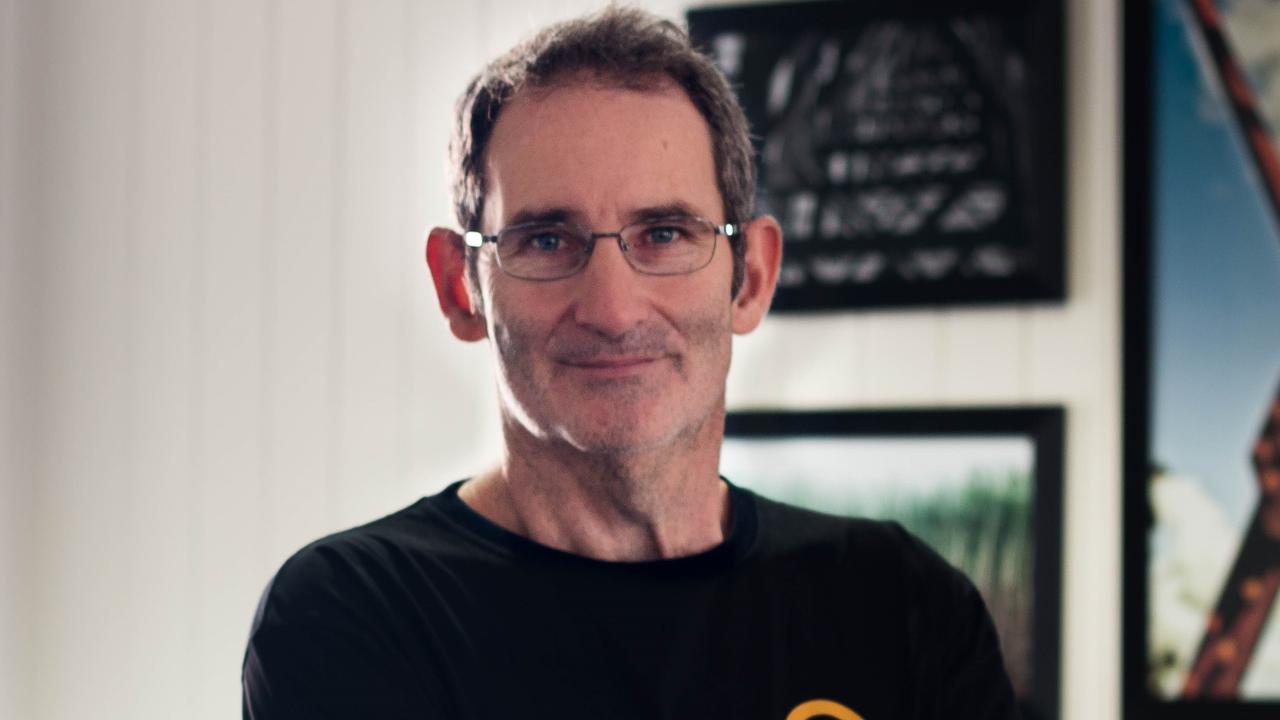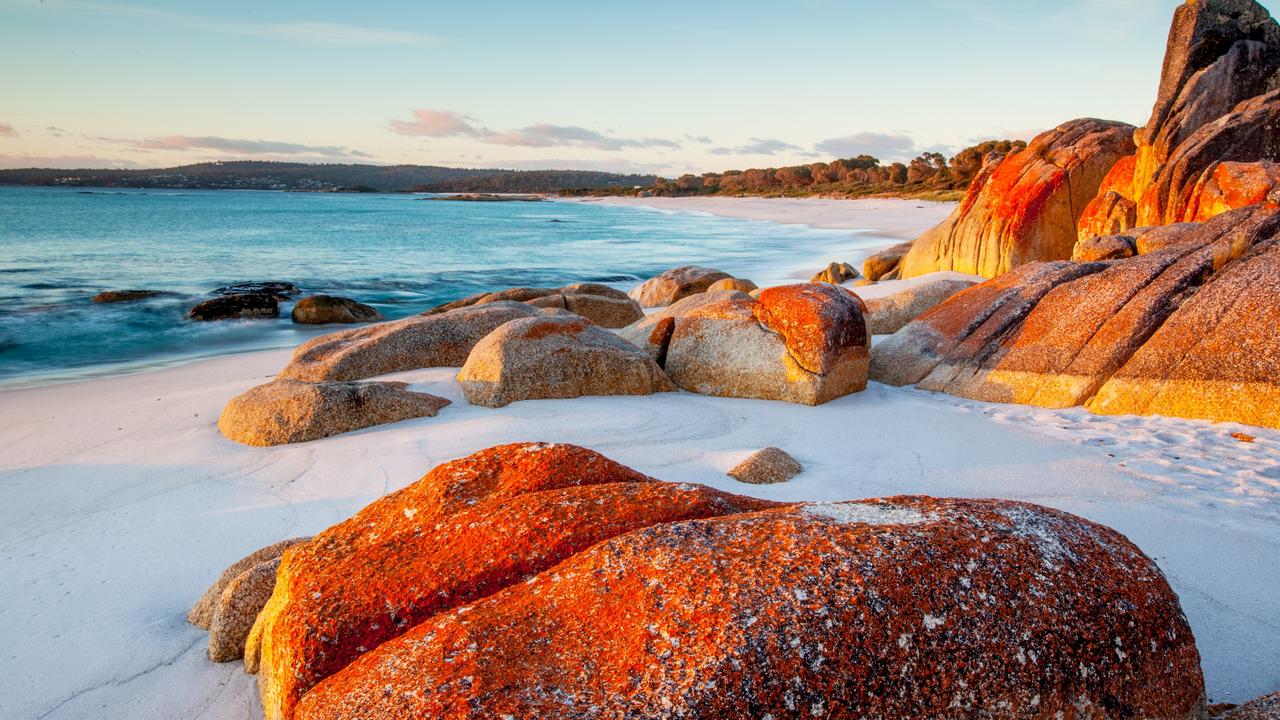Charter flights carrying more passengers than Rex and Bonza combined, data shows
Companies that made the switch to charter flights during the pandemic have not wound that back, ensuring the sector continued to grow.

Business
Don't miss out on the headlines from Business. Followed categories will be added to My News.
It’s the one sector of the aviation industry which boomed during the pandemic and has continued to do so.
Charter flights now carry 13 per cent of all domestic air travellers around Australia, up from 8.6 per cent pre-Covid – or more than Rex and Bonza’s combined 7 per cent of the market.
In the year to January, 8.2 million people boarded a charter flight compared with 5.57 million in the year to January 2020.
Bureau of Infrastructure, Transport and Regional Economics data also shows the number of charter flights rose from 95,850 in 2019 to 141,100 last year.
It’s a scenario which did not surprise Alliance Aviation managing director Scott McMillan considered, who predicted early in the pandemic that any shift to charter would be permanent.
“If we wind the clock back four years, all regular public transport (RPT) traffic stopped right across the country, Virgin went broke and then of course no one wanted to fly on aeroplanes, and effectively there was a permanent move by the resource companies to go away from regular public transport to charter and that’s stuck,” Mr McMillan said.
“In 2019 I never anticipated we’d be owning 67 Embraer 190s but the world has changed, and the mining companies have realised the utility that’s provided by an aircraft operator that flies to their schedule, not a schedule for the general public.”

Aviation Logistics director Matthew Kline said the Covid-19 pandemic helped to introduce more people to charter flights, creating a relationship that was still going strong.
“As borders opened up people couldn’t get commercial flights when they wanted to and there was that concern about being on an aircraft with a lot of other people,” Mr Kline said.
“That introduced people to the charter side of things, and they quickly realised that if you needed to go between Sydney and Melbourne in a day, four people on a small jet could be quite cost effective.”
Having rates between $10,000 and $12,000 for a return Sydney-Melbourne flight in a private jet was comparable to four people in business class, and the time savings “could be massive”, Mr Kline said.
“It’s been pretty stable since then. There is some sign of a pullback (from charter use) in tourism because the discretionary spending just isn’t there.”
Australian Business Aviation chief executive Jessica Graham said her members were experiencing some softening in demand as RPT fares fell, making the price difference between charter and commercial airline travel harder for businesses to justify.
“What we’ve seen is a drop off in those who were using business aircraft for the first time in Covid and after Covid, and their motivation was probably the lack of availability in the scheduled network,” Ms Graham said.
“Now that capability has returned, they’re looking at it as a value situation and saying ‘well the value is not there when we can do it through the scheduled network’. But you still find there’s a lot of business that can’t be done in a certain window using scheduled flights.”
Demand for international long-range charters had also eased as airline connections returned – although that was expected to pick up again in the northern summer.
“We’re also seeing demand from the other way, with domestic charter being fed by international travellers that fly commercial into Australia and then use charters to do their tourism: the rock, the reef and everything in between,” Ms Graham said.
Mr McMillan said flexibility and time savings were the most important features of charter flying for resource companies, which were the main source of the sector’s growth.
There was also the matter of strict zero-alcohol requirements for workers going into a mine, and Alliance ensured there was no booze on board inbound services.
“There’s no availability of alcohol so they can fly in, and all are going to pass their alcohol tests,” Mr McMillan said.
“When they’re coming home we are allowed to serve them a couple of cold beers each, and that’s entirely fine.”
With so much demand for charter work from 15 resource industry clients, Alliance recently made the decision to reduce the number of Embraers it planned to use for parts rather than flying.
In an effort to ensure a reliable supply of parts, Alliance had intended to dismantle 11 of the jets it was buying second hand, but had cut that to seven.
“If that means we have to go out to the market and buy spare parts elsewhere so be it, but the differential from a financial perspective is we can make more money out of flying the aeroplane as a whole aeroplane than we would save by turning it into spare parts,” Mr McMillan said.
More Coverage
Originally published as Charter flights carrying more passengers than Rex and Bonza combined, data shows





